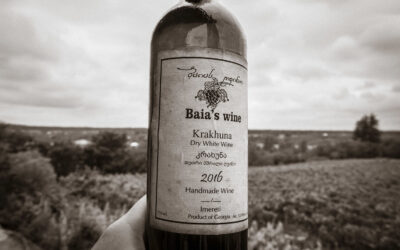Latest News
What is Vermouth, exactly?
The unsung hero of many classic cocktails, vermouth is an aromatised fortified wine. It can be traced back to ancient Chinese, Indian and Greek civilisations, which commonly infused botanicals in their wines – often for medicinal purposes. Wormwood was a popular...
Orange Wine: Trending For All The Right Reasons
You may have seen Orange Wine lurking on the menus of on-trend restaurants or being pushed your way by an eager sommelier. And while it has yet to burst into the mainstream, orange wine has built an impressive cult following in the last couple of decades.
Ca’ Dei Frati and the Influence of Lake Garda
Ca’ dei Frati winery is one of the most important wineries in the surrounding areas of Lake Garda, accounting for 10 percent of the Lugana DOC. While Ca’ Dei Frati was founded in 1939, the roots of the winery actually trace back to 1782, where the land was once owned by monks who grew grapes there. Hence the name Ca’ Dei Frati, which literally translates to Friar House.
Baia’s Vineyard in the Secret Birthplace of Wine – Georgia
Georgians are rightly proud of their rich and historic winemaking culture, and as traditional methods enjoy a renaissance, the Qvevri – an earthenware vessel used to store and age wine for thousands of years – is becoming the unofficial symbol of the country. Though only around three per cent of Georgia’s wines are made in these Qvevri, they remain a romantic ideal that celebrates the country’s history.
Is Climate Change Affecting Oak in Burgundy Chardonnay?
Wine, in Burgundy, is built into the fabric of the culture. The Chardonnay grapes the region is known for have been growing there and adapting to the precise climate conditions of the region for centuries. Though, climate change is rapidly altering wine as we know. 2020 marked the earliest grape harvest ever in Burgundy. Read on as we explore climate changes’ impact on Burgundy wines.
Welland – A Story of Enduring Survivor Wines in Barossa
Welland is an enduring ‘survivor’ vineyard in a truly unique location that is enjoying a new lease on life. Planted in 1923 by one of the Barossa’s founding families, Welland is the last remaining section of much larger plantings of vines and fruit orchards that once occupied the northern end of the township.
Marques de Vargas – The Pioneers of Russian Oak Ageing in Spanish Wines
Mentioning the name Marqués de Vargas means referring to a dynasty of four generations devoted to the production and commercialisation of outstanding wines from the Rioja, since the Marquisate of Vargas is held by a family that has close ties to this acclaimed Spanish winemaking region.
Lunar Magic – A wine that’s totally out of the world today
We’re indulging in a bottle of wine that’s totally out of the world today! A wine, special not just by how it looks but by everything it represents… The Movia Lunar
Wine Pairing in a Meat-Free World
With more people opting for a meat-free diet, where does that leave the art of wine matching?
Roco Winery – The Winery That Placed Willamette Valley on the Map
The Roco story is one of vision. When Rollin Soles and Corby Stonebraker-Soles came to Oregon in the 1980s, they arrived at the leading edge of a movement.
The New Wave of Sustainability in Winemaking
Sustainable wines aim to have a winemaking process that protects the environment, supports social responsibility, maintains economic feasibility, and produces high-quality wines. As grapes are grown, harvested, and made into wine, a multitude of environmental factors are prioritized. Read on as we explore further…
Broc Cellars – California’s champion of unorthodox and natural wines
Broc Cellars fits hardly anybody’s idea of a California winery. You won’t see any cellars, for one thing, or anything remotely pastoral, like a vineyard. The cellars are a warehouse, on a corner in an industrial district here in Berkeley. Across one street is a cement plant. Across another is a motorcycle-repair shop. The melody of passing freight trains plays every once in a while.












